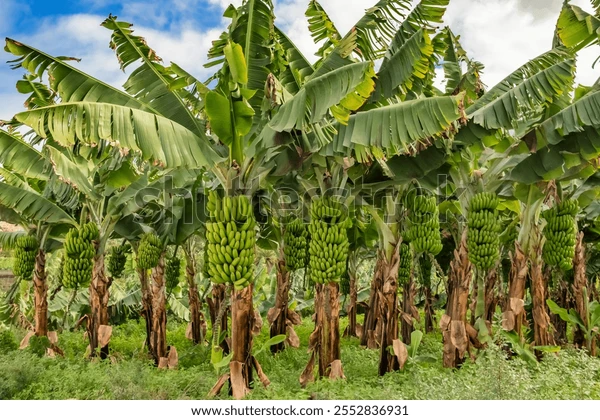Introduction
Bananas are one of the most important fruits grown in tropical and subtropical regions, providing food and income to millions of households. However, banana production faces major threats from pests and diseases such as banana weevils, nematodes, and fungal infections. Excessive reliance on chemical pesticides is expensive, harmful to the environment, and can lead to resistance in pests. For sustainable banana farming, natural and integrated methods of managing pests and diseases are both effective and environmentally friendly.
Common Banana Pests and Diseases
1. Banana Weevil (Cosmopolites sordidus)
Adult beetles and larvae bore into the corm, weakening plants and reducing yields. Infested plants often topple before maturity.
2. Nematodes (e.g., Radopholus similis)
Microscopic worms that damage banana roots, leading to poor nutrient uptake and reduced growth.
3. Fungal Diseases
– Panama Disease (Fusarium wilt): A soil-borne fungus causing yellowing, wilting, and eventual death of banana plants.
– Black Sigatoka: A leaf spot disease that reduces photosynthesis and leads to poor bunch development.
4. Bacterial Wilt (Xanthomonas wilt)
Causes yellowing, wilting, and premature ripening of fruits.
Natural Strategies for Managing Banana Pests and Diseases
1. Cultural Practices
– Crop Rotation: Avoid continuous banana cropping on the same land to reduce build-up of soil-borne pests and diseases.
– Sanitation: Remove and burn infected plant material to prevent the spread of fungal and bacterial diseases.
– Mulching: Use organic mulches to conserve soil moisture and suppress weeds, while improving soil health.
– Clean Planting Materials: Always use certified, disease-free suckers or tissue-cultured planting materials.
2. Biological Control
– Predatory Nematodes and Fungi: Beneficial organisms such as Paecilomyces lilacinus can reduce harmful nematode populations.
– Entomopathogenic Fungi (Beauveria bassiana): Naturally attacks banana weevils.
– Encouraging natural predators such as ants, spiders, and ground beetles helps keep pest populations in check.
3. Botanical Extracts
– Neem Extracts: Effective against weevils and nematodes. Neem cake applied in the soil deters root pests.
– Chili-Garlic Sprays: Home-made bio-pesticides that can be sprayed to control soft-bodied insects.
4. Resistant and Tolerant Varieties
Planting varieties bred for tolerance or resistance to Panama disease, Sigatoka, or nematodes reduces dependence on chemicals. Tissue-cultured banana plants are usually more vigorous and less prone to infection compared to traditional suckers.
5. Soil Health Management
Improving soil fertility with compost and organic manure enhances plant vigor, making bananas more resilient to pest and disease attacks. Avoid waterlogging, as it promotes fungal and bacterial growth.
6. Farmer Field Hygiene and Quarantine
Disinfect farm tools before moving between plants to avoid spreading bacterial wilt. Restrict movement of infected planting materials between farms.
Integrated Pest and Disease Management (IPDM) in Bananas
No single method works alone. A combination of cultural, biological, and botanical methods is most effective for natural pest and disease management. Farmers should regularly scout their farms, act early when they notice symptoms, and maintain a clean, well-nourished plantation.
Conclusion
Banana farming can be both productive and environmentally friendly when pests and diseases are managed naturally. Cultural practices such as sanitation, crop rotation, and mulching, combined with biological controls, resistant varieties, and botanical extracts, offer farmers a sustainable way forward. By adopting integrated pest and disease management, farmers not only protect their crops but also safeguard soil health, biodiversity, and long-term farm productivity.

